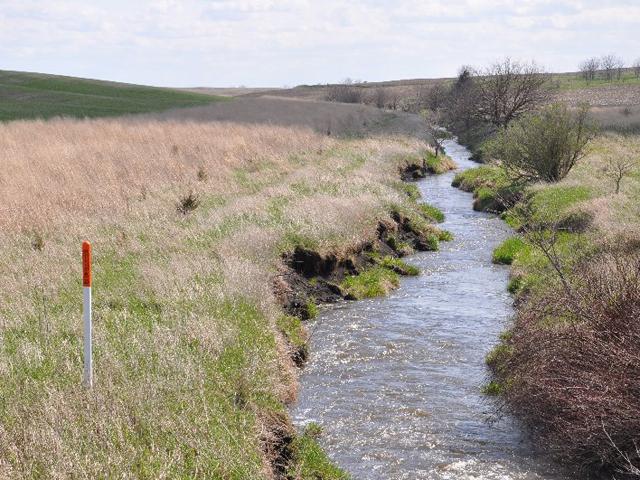Conservation on Working Lands
USDA Boosts Conservation Spending with Climate Dollars
OMAHA (DTN) -- Farmers who have been waiting for approval and funding for USDA conservation programs this year may want to check with local offices about new dollars being added to the pot.
USDA on Monday announced the department is releasing $850 million to boost enrollment in some of its major conservation programs this year.
USDA also is rolling out new water investment strategies in 17 western states to address prolonged drought in the region.
Agriculture Secretary Tom Vilsack detailed some of the plans Monday at a speech in New Orleans before members of the National Association of Conservation Districts.
The Inflation Reduction Act (IRA) provided USDA $19.5 billion over five years to expand its suite of conservation programs specifically to fund practices that reduce greenhouse-gas emissions from farms or sequester carbon in the soil.
"The Inflation Reduction Act provided a once-in-a-generation investment in conservation on working lands, and we want to work with agricultural and forest landowners to invest in climate-smart practices that create value and economic opportunity for producers," Vilsack said at the NACD annual meeting. "We know that agriculture plays a critical role in the nation's effort to address climate change, we're using this funding to bolster our existing programs, maximize climate benefits, and foster other environmental benefits across the landscape."
For the current fiscal year, USDA's Natural Resources Conservation Service (NRCS) will make available $850 million "for its oversubscribed conservation programs" which include the Environmental Quality Incentives Program (EQIP), Conservation Stewardship Program (CSP), Agricultural Conservation Easement Program (ACEP) and Regional Conservation Partnership Program (RCPP).
P[L1] D[0x0] M[300x250] OOP[F] ADUNIT[] T[]
The National Sustainable Agriculture Coalition pointed out the boost in conservation programs to reduce greenhouse gas emissions also includes "many co-benefits that accompany effective conservation practices," the group stated.
"By highlighting the simultaneous benefits possible under the spending, USDA will ensure that climate benefits are also benefits for biodiversity as well as water, soil, and air quality," said Cathy Day, NSAC's climate-policy coordinator. "Climate solutions must build farm resilience, and that requires holistic, systems-based farm support. USDA's plan to work with local partners in rolling out the programs will strengthen that approach."
For EQIP and CSP, USDA said farmers should apply by their state ranking dates to be considered for the current cycle. Those ranking dates vary by state and application dates have already passed in several states. For more information, check here: https://www.nrcs.usda.gov/….
Landowners interested in the ACEP agricultural land and wetland easement programs have until March 17 to submit applications for the first round of funding, USDA stated.
WESTERN WATER STRATEGY
USDA also released a 47-page strategy to address water and land management in 17 western states, dubbed the "Western Water and Working Lands Framework for Conservation Action." NRCS identified strategies that include forecasting water supply; sustaining agricultural productivity, protecting availability for both groundwater and surface water; managing and restoring rangeland and forests; and responding to disruptions from catastrophic events.
NRCS is providing $25 million more in funding under its EQIP WaterSMART Initiative that coordinates funding and projects with the Department of Interior's Bureau of Reclamation. The extra funds will go to three new priority areas in California, Hawaii and Washington, as well as 37 areas that were already identified.
The NRCS funds will complement $728 million that the Bureau of Reclamation also announced on Monday that will go improve drinking water projects in rural and Tribal communities.
At least $125 million of the funds also will go to help water conservation efforts in the Upper Colorado River Basin. That funding comes as seven states in the Colorado River are struggling with how to share needed cuts in water usage stretching from Colorado to California.
USDA's water strategy cites both increasing water demand in western states and climate change as the two biggest threats to agricultural producers receiving reliable water supplies.
For more details, see USDA's Western Water and Working Lands Framework: https://www.nrcs.usda.gov/…
Funding for Climate-Smart Agriculture at USDA, see: https://www.nrcs.usda.gov/…
Chris Clayton can be reached at Chris.Clayton@dtn.com
Follow him on Twitter @ChrisClaytonDTN
(c) Copyright 2023 DTN, LLC. All rights reserved.




